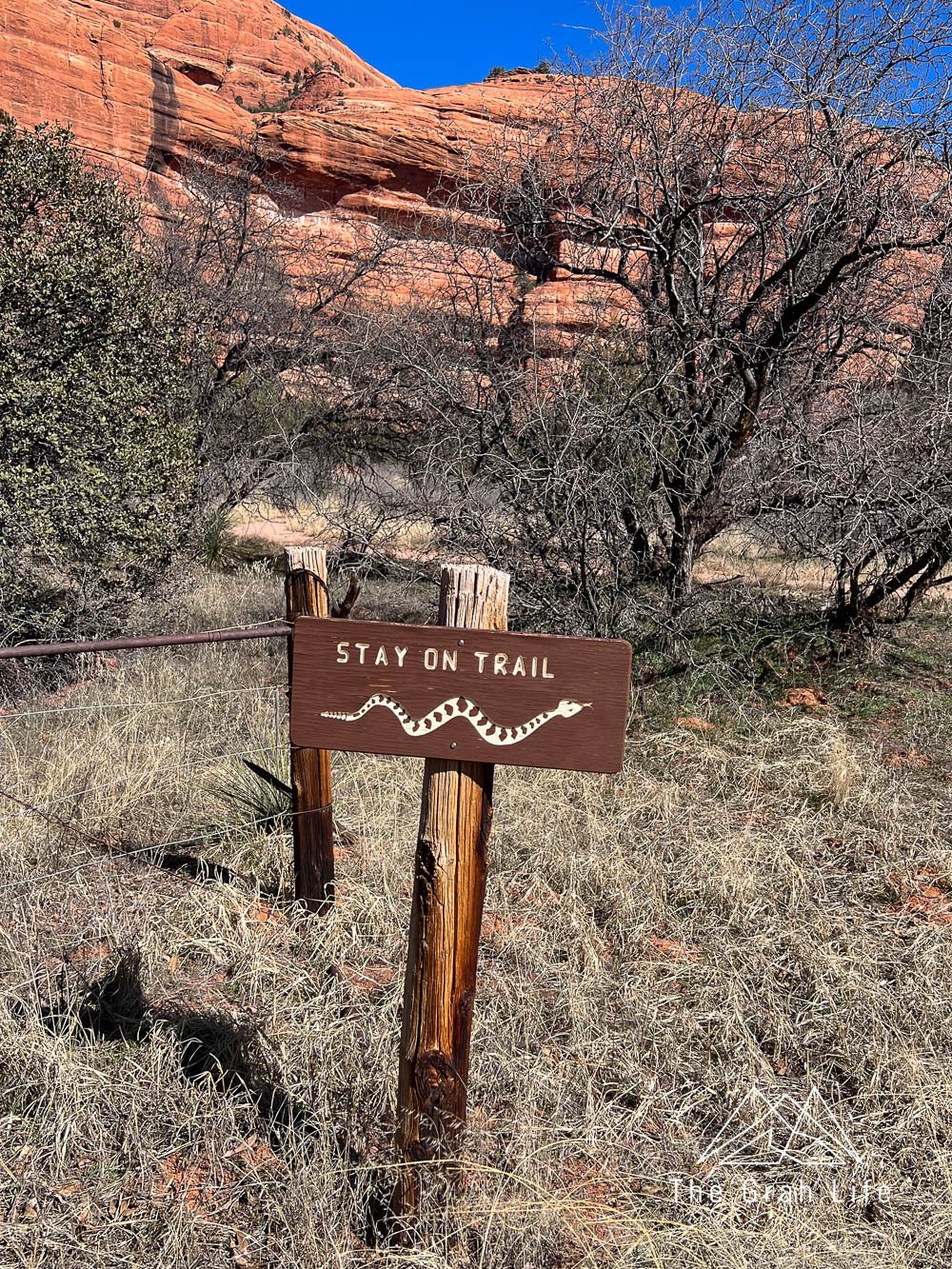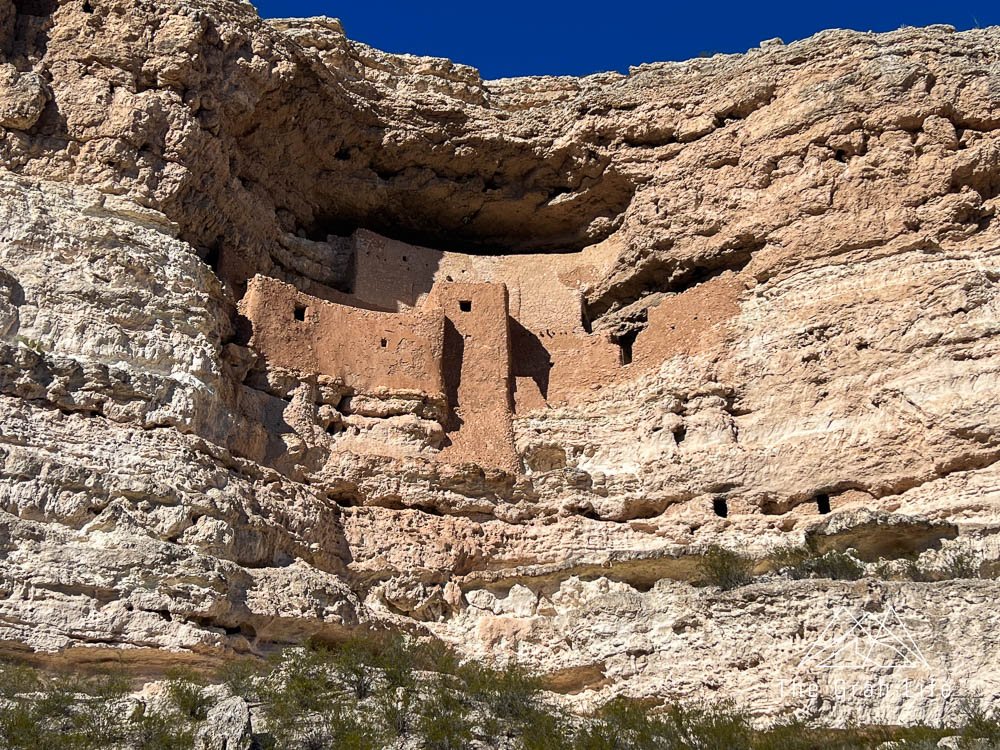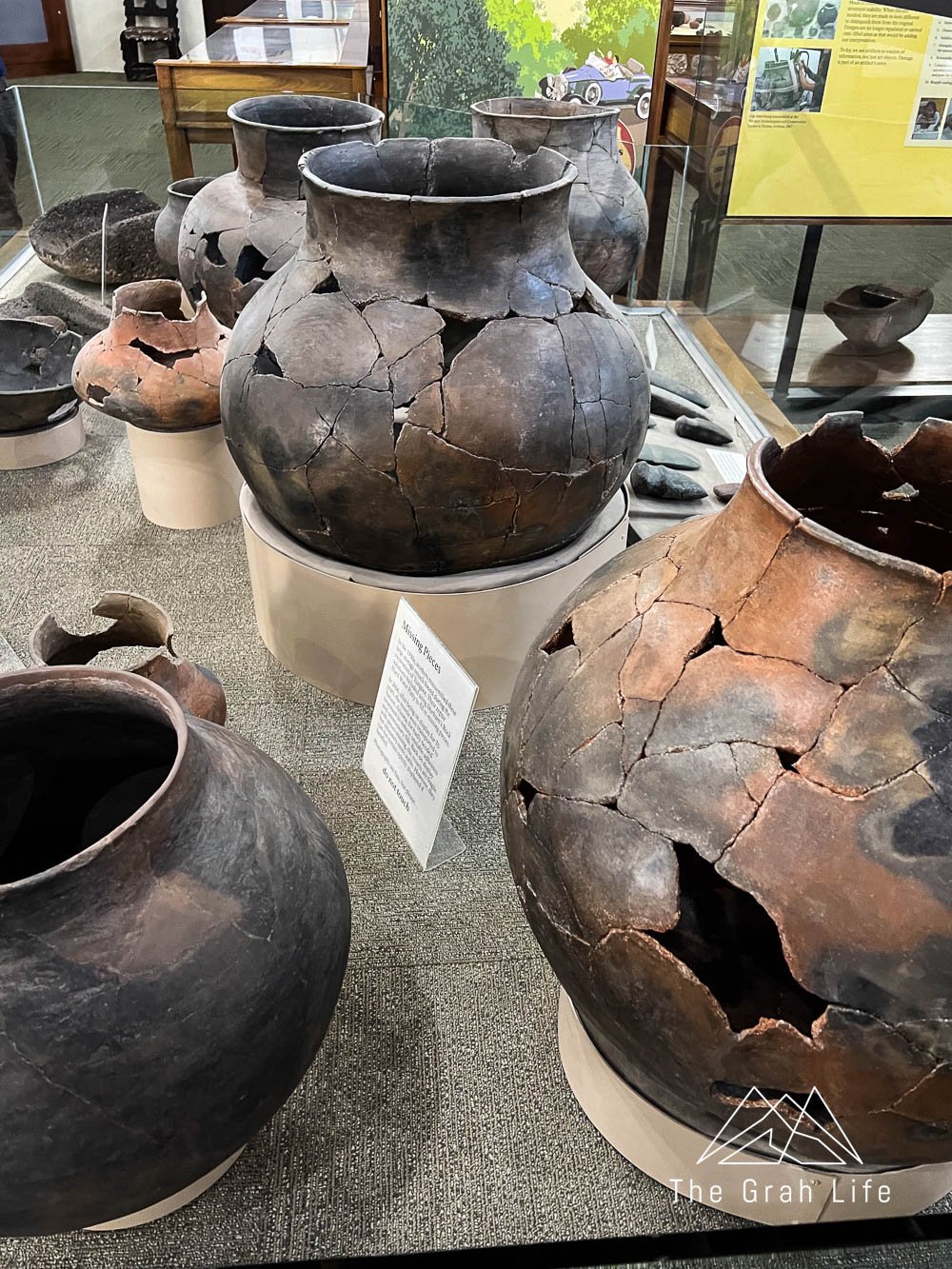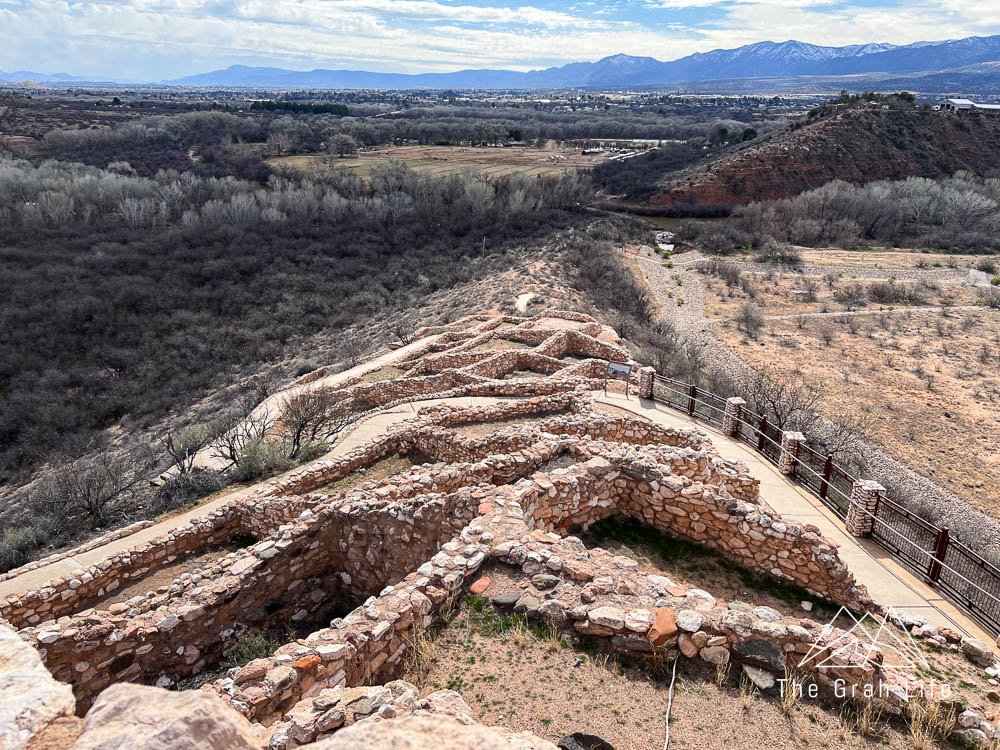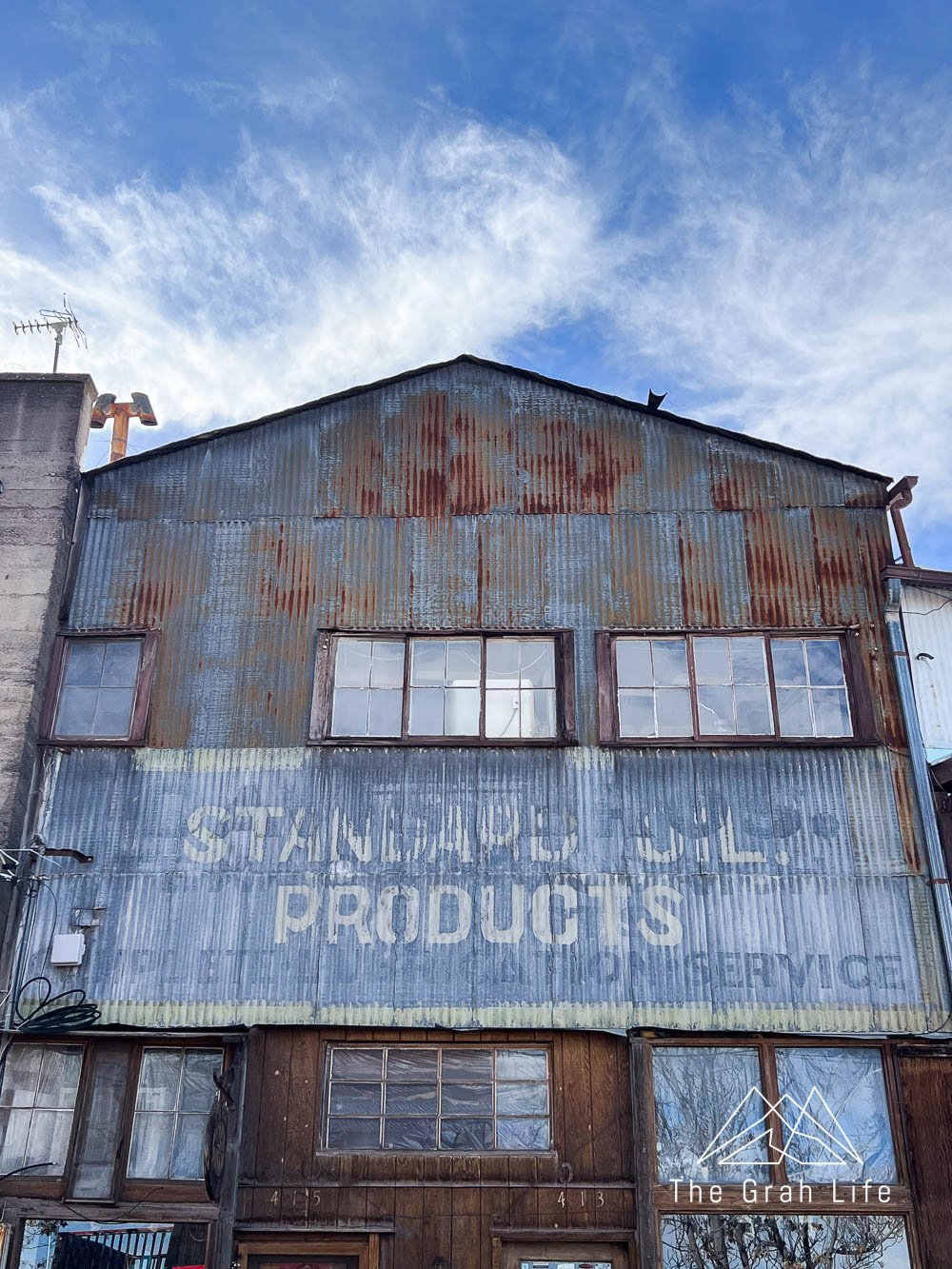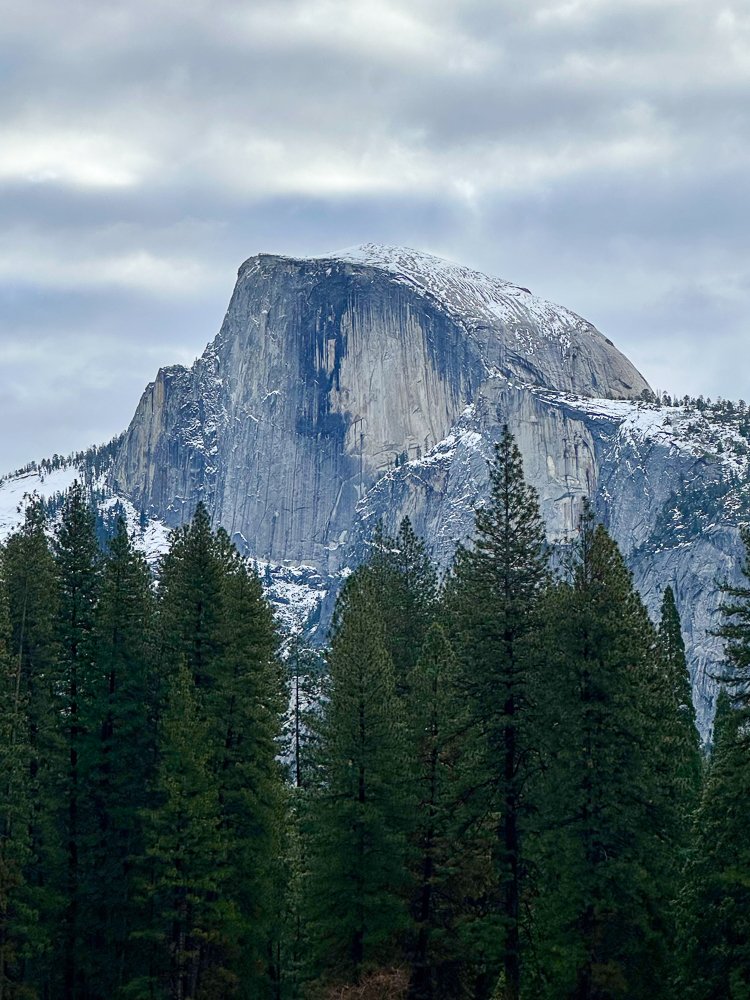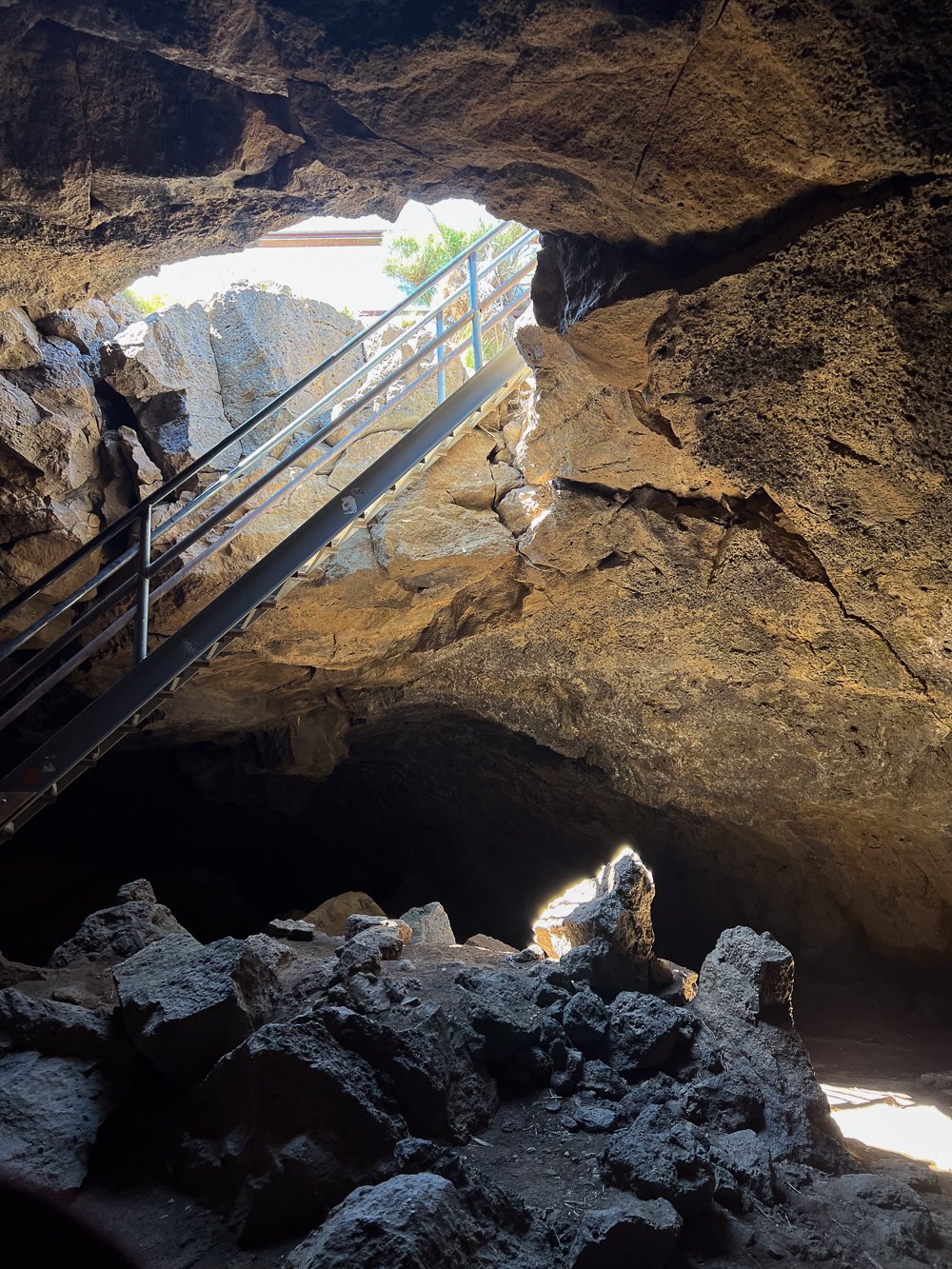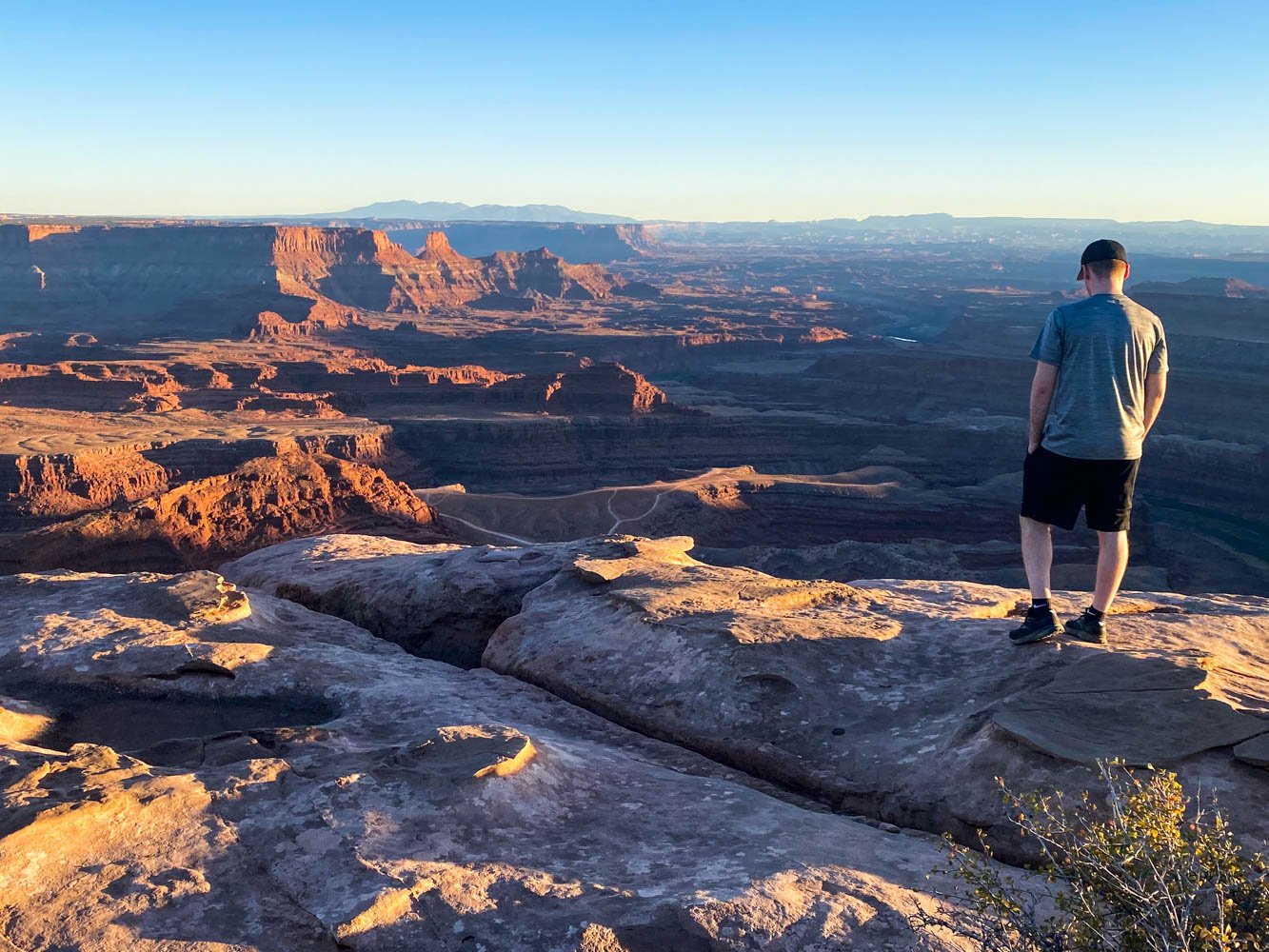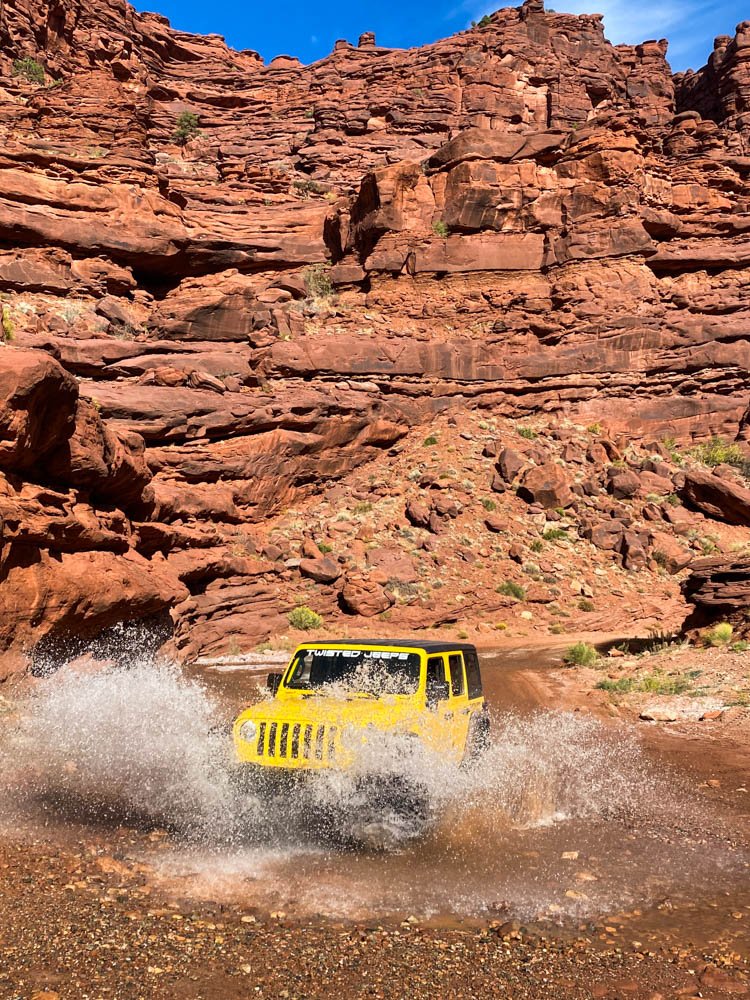1-6 Days in Sedona: a Well Rounded Itinerary
Known for the scenic red rocks surrounding the town, vortexes, incredible hikes, and natural swimming areas, Sedona is the perfect place for any sun lover to vacation.
Disclosure: We’ve included affiliate links with recommended hiking gear in this post. If you click through and buy something, we’ll receive a small portion of that sale. You won’t be charged more, and we haven’t been paid by any of these retailers to share their information. These are all our genuine preferences.
Know what you’re looking for? Click on a link below to jump to that section.
How long should you visit?
We’d recommend staying a minimum of three days, but of course, more time is always better!
Bell Rock
When to visit
Best weather
March to May/September to mid-October
Spring and fall are the best times to visit. Temperatures get up to the 70s during the day and drop to the 40s in the evening, so it’s perfect weather for enjoying outdoor activities.
However, this is also peak tourist season, so it’s more expensive and crowded during this time. June and August are monsoon seasons, so avoid visiting during these months.
Best prices
November to February
Although it’s an unpopular time to visit, we loved visiting Sedona in the off-season. To us Pacific Northwesterners, it’s much warmer (and sunnier!) than the western side of the Cascades during this time of year.
Yes, the temperatures are colder, ranging from highs of 65 to lows of 30 degrees, but it hardly rains, and it’s so much less crowded and more affordable.
Secret Slickrock Trail
Getting to Sedona
Sedona is a two-hour drive from the Phoenix Sky Harbor Airport (PHX), Arizona’s largest airport. However, the Flagstaff Pulliam Airport (FLG) is less than an hour’s drive. Wherever you choose to fly, you will need your own car to get to and explore Sedona.
Where to stay
There are so many great places to stay in Sedona and the surrounding area that we’ve written another blog with lodging suggestions. In it, you’ll find lodging organized by location and budget with descriptions of walkability and nearby sites.
Is Sedona expensive?
Yes, it’s one of the most expensive places to stay in Arizona. Lodging is costly, but most of the activities we enjoyed were very cheap or covered by the national park pass that we already had. If you’re looking to spend less on lodging, visit between November and February for off-season pricing.
Fay Canyon Arch
What if we don’t want to hike?
Although we’re avid hikers, when we visited Sedona, Zach was impacted by a knee injury. We did minimal hiking, and our days were still jam-packed.
It’s so beautiful in Sedona that you’ll likely want to do easier walks among the red rocks regardless of whether you consider yourself a hiker or not. There is also plenty to do without stepping foot on a trail.
We have hiking suggestions throughout the itinerary, but we’ll add in optional substitutions as well.
Crane/heron petroglyph at V Bar V
Parking passes
America the Beautiful
We recommend purchasing an America the Beautiful Pass before arriving. Although Sedona doesn’t have any national parks in the area, this pass will cover your fees for visiting the many national monuments and heritage sites.
Red Rock Pass
The Red Rock Pass is the local parking pass to access some heritage sites and trailheads. Check here to see what it covers, but know that the America the Beautiful Pass covers most of these areas (and more) as well.
There are three sites mentioned in the itinerary below that are only covered by the Grand Annual Red Rock Pass or by a separate fee on-site. The itinerary specifies when this is the case.
Etiquette
You’ll be visiting national monuments, Native American Heritage Sites, and trails that are over 800 years old during your time in Sedona. Please be respectful of the land by following the leave no trace principles.
It’s especially important to stay on trails — the desert floor is fragile — and to leave what you find. Don’t disturb historic structures or artifacts and leave natural objects, like rocks and antlers, for the benefit of wildlife and for others to enjoy.
As you enjoy viewing petroglyphs and visiting heritage sites, practice good archaeological site etiquette. This includes refraining from touching rock art and climbing on ruins. Do not make offerings to these sites or touch artifacts.
Tuzigoot National Monument
1-6 day itineraries
We have grouped our activity recommendations together based on the area, length of time, and energy required, but it’s possible to mix and match activities/days to your liking.
Itinerary breakdown
Day 1: Pueblos, red rocks, and sunset views
Day 2: Petroglyphs, pueblos, and artifacts
Day 3: Swim and stargaze
Day 4: Jerome
Day 5: Get outside
Day 6: Explore town
Day 1: Pueblos, red rocks, and sunset views
We’re starting day one in West Sedona with rich history, beautiful drives, and ending it with sunset views over the red rocks.
Mileage: 45 miles
Drive time: 1.5 hours
Morning
Start your day with a good breakfast at the Coffee Pot Restaurant (Meghann’s grandparents’ recommendation — their food was great and their menu was extensive) or an early hike. We hiked Fay Canyon Trail to Fay Canyon Arch, but we have many more suggestions below.
Bring some snacks with you for the day as well — you’ll make it back to Sedona for a late lunch.
Fay Canyon Trail
Fay Canyon Arch
Palatki Heritage Site
Make a reservation to visit this grotto — one of our favorite Native American Heritage Sites — from the Hopi clan. While there, you’ll take a guided tour with a ranger and see historic dwellings, tools, and petroglyphs.
Expect to spend an hour here, and bring both sun protection and water as some of the trails are exposed. The tour does involve walking up a steep hill with uneven steps, but everyone was able to go at their own pace between sites.
Pueblos at the Palatki Heritage Site
Road conditions
The roads in this area close after rain or snow. If this is the case, signs will be posted at key access points, but you can always call ahead to ensure they’re open.
The roads leading to the Palatki Heritage Site are gravel, so expect a few potholes and for your journey to take a bit longer than usual. The site also closes when the temperature is over 100 degrees Fahrenheit.
You’ll need a Red Rock Pass or an America the Beautiful Pass, along with your timed permit.
If you aren’t able to get reservations to visit the Palatki Heritage Site, visit the Honanki Heritage Site instead.
Red Rock Loop
On your way back to Sedona, drive the Red Rock Loop. To enter, you’ll need a Red Rock Pass, or an America the Beautiful Pass.
To access Crescent Moon Ranch, you’ll need the Grand Annual Pass or pay a separate $12 fee per vehicle.
Red Rock State Park Miller Visitor Center
Stop by the Visitor Center for guided nature and bird walks, as well as archaeology and ethnobotany guided hikes.
Crescent Moon Ranch
If want to take a swim, visit Crescent Moon Ranch next. It’s a great swimming hole along Oak Creek with famous views of Cathedral Rock.
It’s most beautiful in the spring and fall when the surrounding foliage is full, so we decided to skip it when we visited in winter. It’s a popular spot, so expect it to be busy regardless of the season.
Secret Slickrock Trail
Instead of visiting Crescent Moon Ranch, we hiked the Secret Slickrock Trail just up the road. It’s less than a mile roundtrip, with a small amount of elevation gain, and we had the entire trail to ourselves. From the top, we had great views of Cathedral Rock. If it’s rained recently, you’ll see small reflecting pools.
Scenic pullouts
Along the drive, there are many pullouts and scenic views. Lover’s Knoll is the most well-known, so we were surprised when the pullout nearly required a 4x4 vehicle to access. Assess accessibility before pulling off at viewpoints.
Tlaquepaque Arts and Shopping Center
Head to the Tlaquepaque Arts and Shopping Village for lunch and shopping next. The area has over 50 shops, including art galleries and specialty shops. It’s outdoors, but is well-shaded.
Sunset
The red rocks surrounding Sedona make every sunset stunning. Our favorite way to experience the sunset was hiking around golden hour, although eating a meal with the gorgeous views would be a close second.
Sunset Hike
Hike Airport Mesa (really only a quick walk up a hill) to experience one of Sedona’s vortexes with panoramic views. This vortex is said to be an upflow area — helping you gain perspective, oneness, and serenity. Meghann felt a mindset shift while we were there, but Zach did not. Whether you feel anything or not, it does have a great, calming atmosphere.
The parking lot at Airport Mesa only fits about ten cars, so you either need to wait patiently to grab a spot as it opens or park at the Sedona View Trail’s parking lot and walk half a mile to the vortex site.
Sunset dinner
If you’d rather wind down for the day, head to Uptown for shopping and dinner with a sunset view. We recommend the Canyon Breeze Restaurant, the Hideaway House, Saltrock Kitchen, or The Vault Uptown for meals with the best views. Make reservations for an hour before sunset to take in the best lighting on the surrounding landscapes.
Day 2: Petroglyphs, pueblos, and artifacts
You’ll be heading south of Sedona for day two. Expect to see more pueblos, ruins, and petroglyphs! We recommend stopping at Miley’s Café for breakfast, but don’t forget to bring snacks along for the long day.
Mileage: 73 miles
Drive time: 2 hours
V Bar V Heritage Site
Head to V Bar V to start your day. Here you’ll see more petroglyphs on one wall than many people see over their entire lifetimes. The wall of petroglyphs is staffed by a ranger who will walk you through the various carvings, forms, and meanings, including an entire solar calendar.
Montezuma Well
As you’re leaving V Bar V, turn onto Montezuma Well Road before you reach the main highway. Montezuma Well is a subsect of Montezuma Castle, but much less popular. There are dwellings along the sides of the well, but the well itself is what we found most interesting.
The water in the well has unusually high levels of carbon dioxide, arsenic, and calcium — with five animals living in the water that don’t exist anywhere else in the world.
The Hopi, Zuni, and Yavapai all have oral histories of their ancestors living in the area. It was fascinating to see how they found ways to irrigate their crops despite the toxic water and hear their stories about the well.
Every day the well is replenished with 1.6 million gallons of water by an active spring (that’s 1,100 gallons entering the bottom of the well every minute). The tribes said once something emerges from the vents at the bottom of the Well, it can never return.
Of course, scientists were curious about this, so in 2006 divers put cameras, rovers, and sensors into the vents. Every piece of equipment was pushed back out — proving the legend true.
Montezuma Castle
Visit Montezuma Castle next. It’s a five-story pueblo built into the side of an impressive limestone cliff. Of the area’s dwellings, Montezuma Castle and its 20 rooms have stood the test of time best. Castle A, just a short walk from Montezuma Castle also had five stories with 45 rooms, but it’s badly deteriorated now.
Lunch
Keep heading south to Camp Verde for lunch. Eat at Babes Round Up before your next stop.
Verde Valley Archaeology Center
The Verde Valley Archaeology Center was recommended to us by the rangers at V Bar V. It’s a museum full of ancient artifacts, so it ties together everything you’ve learned from each historical site leading up to this point. You’ll learn more about local tribes’ histories, trading, and see amazing examples of weaving that no one has been able to replicate since.
Museum volunteers guide you through the exhibits, and we loved having the ability to ask questions, but we were very surprised to spend two to three hours here.
If you’re not feeling up to a museum trip, consider exploring the Verde Valley Wine Trail instead.
Bell Rock
On your way back to Sedona, we highly recommend hiking at Bell Rock around sunset. You can walk in a loop around it, but we chose to hike as high up onto Bell Rock as we could with the amount of daylight we had. Doing so is a bit of a scramble with some route finding, so be sure to wear sturdy shoes. Do take into consideration how much daylight you’ll have, and turn back before it begins to get dark.
Dinner
We found that most restaurants close early in Sedona, so if you get back to town later, we’d recommend eating at Moon Dog’s Pizza, or Rascal Modern American Diner & Bar.
Day 3: Swim and stargaze
Sleep in, head to brunch, and pack a swimsuit, warm hat, coat, and gloves for this day! It’s going to be a long one, but you’ll see some amazing views. Choose to do this day when you have a clear forecast — you’ll see why soon!
Mileage: 78 miles
Drive time: 2 hours
Oak creek canyon
Often much cooler than Sedona, Oak Creek Canyon is a beautiful area to go for a scenic drive. In the warmer months, it’s a popular spot to swim.
Grasshopper Point
This area is beautiful, regardless of whether you plan on swimming here or not. Since we visited in winter, we walked the Allens Bend Trail along the river instead of swimming. With so many aspen trees near the river, Grasshopper Point would be especially beautiful in the fall.
This is one of the few sites that is not covered by the Red Rock Pass. You’ll need to pay an additional fee of $12 per vehicle, or have the Grand Annual Pass is necessary to enter.
Slide Rock State Park
Slide Rock State Park is the most popular area to swim. It’s full of natural waterslides, but wear a good pair of water shoes if you swim here. As the name suggests, the rocks are slippery!
If you’re looking for a place to stay in the area, we fell in love with the cabins at Orchard Canyon on Oak Creek and the Forest Houses Resort at first sight.
Call of the Canyon Day Use Area
This site is full of beautiful views. Choose to take a quick walk down the Call of the Canyon Trail or linger along the West Fork of Oak Creek Trail. In the winter, you’ll find icicles hanging off the red rocks and beautiful fall colors from the maple trees in autumn.
Again, this is one of the few sites that is not covered by the Red Rock Pass. An additional fee of $12 per vehicle, or have the Grand Annual Pass, is necessary to enter.
Flagstaff
By now, you’re 1/3 of the way to Flagstaff. Keep driving and go to the Tiki Grill for lunch (Zach’s got a thing for tiki themes). If you have free time, visit the town’s art galleries, historic downtown, or Walnut Canyon National Monument.
Lowell Observatory
This will be a highlight of your trip. Do check the Lowell Observatory hours ahead of time — in the winter they’re usually closed on Mondays and Tuesdays, otherwise they’re open from noon to 10:00 pm.
We recommend arriving before it gets dark on a night with clear skies. We arrived about 45 minutes before sunset and were able to see the green comet, the Betelgeuse star, and Venus from telescopes on the Giovale Open Deck Observatory all before it got dark.
When you arrive, ask for recommendations on where you should head first based on that evening’s celestial events. Then wander between their telescopes and the buildings with exhibits to warm up. This is where you’ll want those warm layers you packed!
Our favorite telescope was the Clark Dome. It’s older than the state of Arizona and still regarded as one of the best refracting telescopes ever made. We saw amazing views of the Orion Nebula here.
We were also lucky to have access to the Dyer Telescope. Usually, it’s only available for viewing by a private $575 rental. When we were there, it wasn’t rented out for the evening, and they had enough staff on hand to open it to the public.
Day 4: Jerome
Again, sleep in and take the morning slow after a late night at the observatory. Enjoy breakfast at the Local Juicery before heading west for the day.
Mileage: 65 miles
Drive time: 2 hours
Tuzigoot National Monument
The first stop is at the Tuzigoot National Monument. This is a hilltop pueblo that was excavated, reinforced, and partially restored during the Great Depression. Now, you can walk through some of the dwellings.
Jerome
From there, make your way to Jerome, an abandoned mining town taken over by artists. When you arrive, put your name on the waiting list to eat at Haunted Hamburgers (you’ll have about an hour wait – it’s worth it). While you wait for a table, walk around town. It’s full of unique shops and art galleries.
The best shop is the Nellie Bly Kaleidoscope Shop. It’s the world’s largest kaleidoscope shop. Give yourself plenty of time to explore here — at least half an hour!
Be sure to stop by The Blazing Owl for the most beautiful (reusable!) candles you’ll ever see and the Miner’s Pick Rock Shop for gems.
While you’re wandering through town, look for remnants of the old jail, saloons, mining history, and take a ghost tour if you dare.
After exploring the town, we chose to drive up Mingus Mountain. The most scenic point was a pullout not far from town.
Drive into the sunset
On your way back to Sedona, you’ll have the most beautiful views of the sunset as you get closer to town. We chose to explore forest roads near Mescal Mountain Trail as the rocks started to glow at during golden hour. The views were stunning.
Day 5: Get outside
If you haven’t had your fill of the outdoors yet, this is your day to soak in the scenery.
Hike
Start your morning with a hike. If Devil’s Bridge, Seven Sacred Pools/Soldier Pass Cave or the Boynton Canyon Trail are on your bucket list, aim to get to the trailhead before sunrise if possible or use the shuttle (more on that below).
Off-roading
Take a Pink Jeep Tour or rent a jeep from Barlow Adventures to go off-roading yourselves.
Try driving to the Mystic Vista viewpoint (on Forest Road 9587), or the Hide Out Cave Trail if you have little off roading experience. Explore Schnebly Hill Road, Diamondback Gulch or the more technical Broken Arrow Trail if you have more experience.
If you have off-roading experience and manage to snag a permit, driving Soldier Pass is a must-do.
We got a surprising rental car upgrade to a Jeep at the Phoenix airport so we didn’t have time to plan off-roading trips — we will next time!
Verde Canyon Railroad
If off-roading is a bit too extreme for you, ride the Verde Canyon Railroad instead. It’s a historic rail line that passes by the Verde River, ancient ruins, wineries, and beautiful scenery. Look under the events page to see all they offer from holiday rides to starlight rides.
Day 6: Explore town
Today you’ll be wrapping up everything you haven’t seen in town yet and topping your night off with a grand experience.
Chapel of the Holy Cross
By now, you’ve driven past the Chapel of the Holy Cross, but it’s worth a stop to appreciate the serene atmosphere and Frank Lloyd Wright-inspired architecture.
Son Silver West
On your way back to Sedona, stop at the Son Silver West Gallery. It’s an eclectic shop where you’re sure to find something you love.
Amitabha Stupa Peace Park
If you haven’t stopped by the Amitabha Stupa Peace Park, today is the day. It’s a place for reflection, meditation, and experiencing peace.
Lunch
Stop by Naughty Burgers or the Tamaliza Cafe for lunch before starting your big adventures of the afternoon.
Tour
We love ending our trips with a bang – doing something romantic or exciting that we don’t usually get to do at home.
Consider taking a hot air balloon trip with Red Rock Balloons or go star gazing with a UFO tour.
Best hikes
Sedona has so many incredible hiking trails! Many intersect or are short enough that you could fit in multiple hikes each day. The following are on our bucket list (with more mentioned in the itinerary):
West Sedona area
Soldier Pass Trail and Cave Spur Trail and the Seven Sacred Pools Via Soldier Pass to Brins Mesa Loop
Crescent Moon Ranch at Red Rock Crossing
Village of Oak Creek area
Cathedral Rock Trail and the Cathedral Rock Loop
Fay Canyon Trail
Trailhead shuttles
Parking is limited at trailheads, so it’s recommended that you take the free shuttle to and from the most popular hikes. The shuttles run between 7:00 am and 5:30 am so it’s a great stress-free way to explore. Of course, check the shuttle schedules tab for the most up-to-date information and use the shuttle tracker to see real-time arrivals.
Trailheads to shuttle to:
Dry Creek Vista Trailhead/Mescal
Devil’s Bridge, Chuckwagon Trail, Dry Creek Trail, Girdner Trail, Mescal Trail, Lizard Head Trail, Snake Trail, Long Canyon Trail, Deadman’s Pass
Soldier Pass Trailhead
Soldier Pass Trail, Devil’s Kitchen Sinkhole, Seven Sacred Pools, Teacup Trail, Cibola Pass Trail, Brins Mesa Trail, Jordan Trail
Cathedral Rock Trailhead
Cathedral Rock Trail, Cathedral Vortex, Templeton Trail, Easy Breezy Trail, Baldwin Trail, HT Trail
Littlehorse Trailhead
Bell Rock Pathway, Chicken Point, Llama Trail, Chapel Trail, Broken Arrow Trail
Fay Canyon Arch
What to pack
Spring to fall
A sun shirt is a long sleeve, lightweight shirt, often with a hood and SPF protection. They’re breathable so you won’t get too hot.
Neutrogena Ultra Sheer Sunscreen
This sunscreen has the safest product rating for sunscreen on the EWG’s Skin Deep guide.
Windbreaker or rain jacket
Some raincoats like these (men’s/women’s) double as windbreakers!
Pants work well for sun protections, but also keeping the dust, underbrush, and critters off your legs as well.
Most of the trails in Sedona have some uneven, rocky, and even slippery ground. Get a pair of boots with good tread.
Trekking sandals (men’s/women’s)
Necessary for swimming holes!
One of these towels dries both of us off.
Hiking day pack (men’s/women’s)
On average, it’s suggested to pack one liter of water for every two hours you’ll be hiking, but we tend to err on the side of caution and pack a bit more, especially on hot days.
We love the Hydrapak water bladders linked above. Since we always have water handy, it helps keep our water breaks quick and we end up staying more hydrated.
Don’t forget to replace salts and electrolytes – we love these electrolyte caps for this!
Swimsuits
Check out what else we bring with us hiking here.
Search the blog for more adventures! Try searching for topics such as “camping”, “waterfalls”, or “Washington”.







